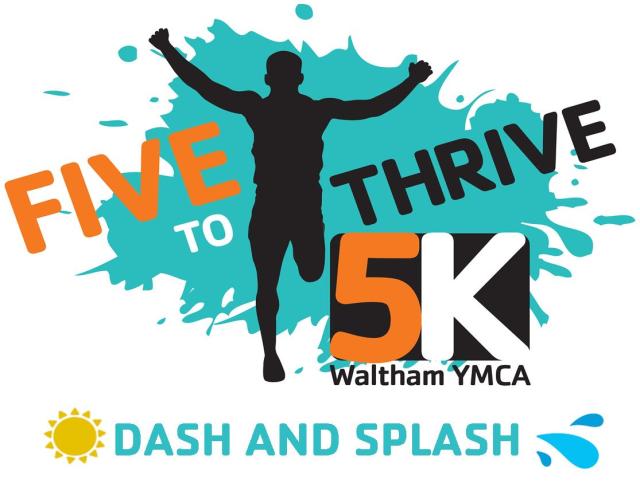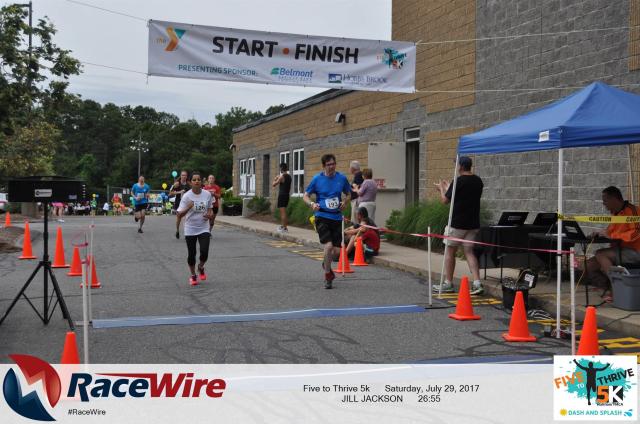In my earlier post, I mentioned how I was using a new training method of Maximum Aerobic Function, developed by Phil Maffetone for endurance athletes. Last weekend was my first 5-K after a couple of months of training. This gave me a chance to see how it is working.
The race was the Waltham YMCA’s Five to Thrive 5K. The benefits went to support the YMCA Annual Fund Campaign and YMCA Chronic Disease Programs, including LIVESTRONG at the YMCA and the YMCA’s Diabetes Prevention Program.

After a couple months of slow running, my time was 36:11 and I placed 21/22 in my age group.
WHAT?!?!?
Something’s not right. I saw the clock as I finished — it read somewhere in the 27s. Was I crazy from the heat?
Looking at the official RaceWire picture, I see that’s not me at all.

Turns out, my wife and I grabbed the wrong bibs.
She came in at a blazing 26:55 and about six-foot-five.

Now, anyone looking at this blog will notice that my time here is a slower than times I was putting up in earlier races. What does that mean for the MAF training method?
First, let me say that I felt pretty good during this race. I felt like I had a good pace and a steady clip, even if my heart rate maxed out at 183 at some point. So, that is a point in its favor.
Second, the course had some long up hills and finished on a steep grade – and I have been training on a flat track. Because the course went through the town, there were some narrow points where it was hard to pass people and find my place in the pack.
The weather was about 65 degrees and 58% humidity. It felt sultry, but it wasn’t brutally hot.
So, I think I may have slowed down a bit. As my wife said, there may have been a bit of conditioning ourselves to run slower, even though we tried to kick in some speed.
It is hard to gauge the effectiveness of the method on a course that I haven’t run in the past. This coming weekend, there is a biathlon on a familiar course, so that may give another clue. For now, I am sticking with the method, because it is a way to train in summer without overheating. But if times don’t improve over the next couple of races, it will be a call to re-evaluate the approach.
